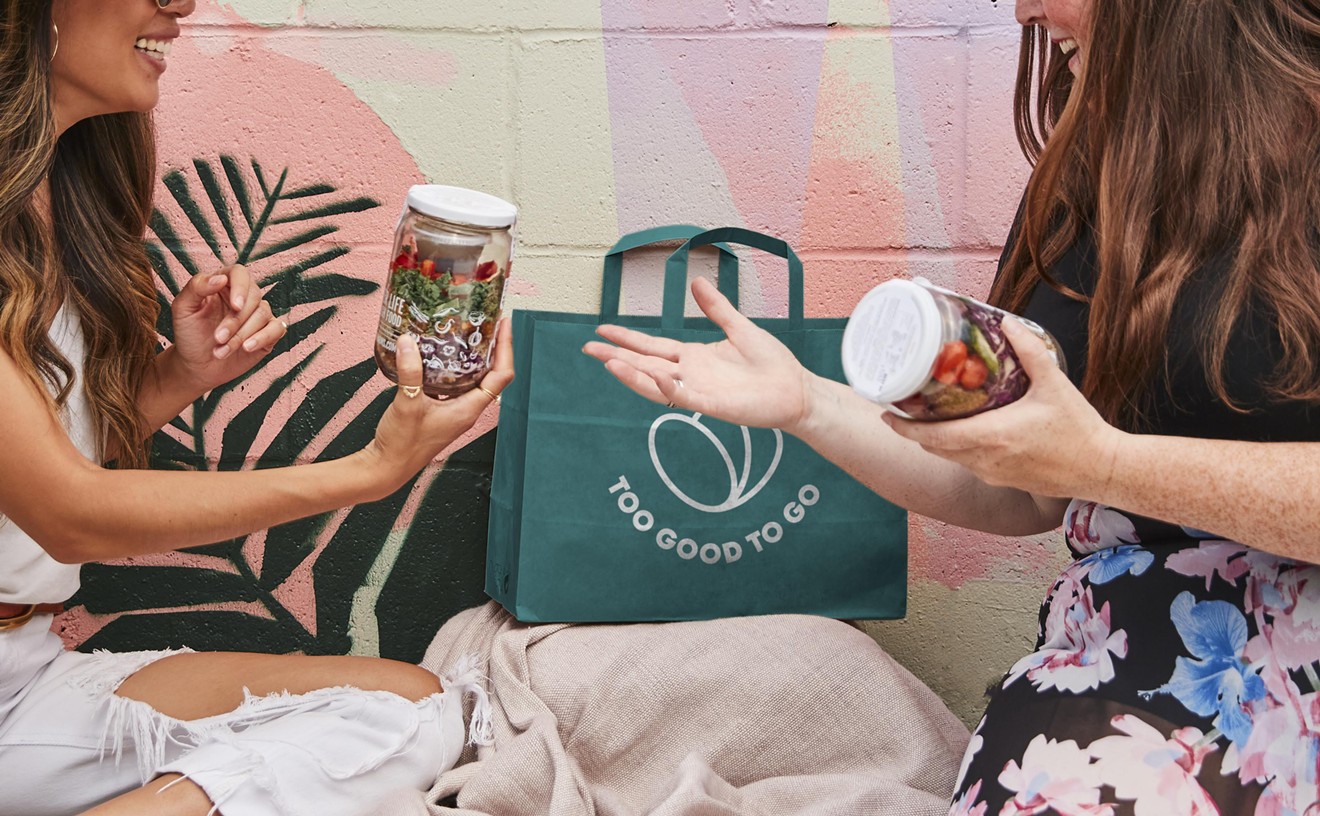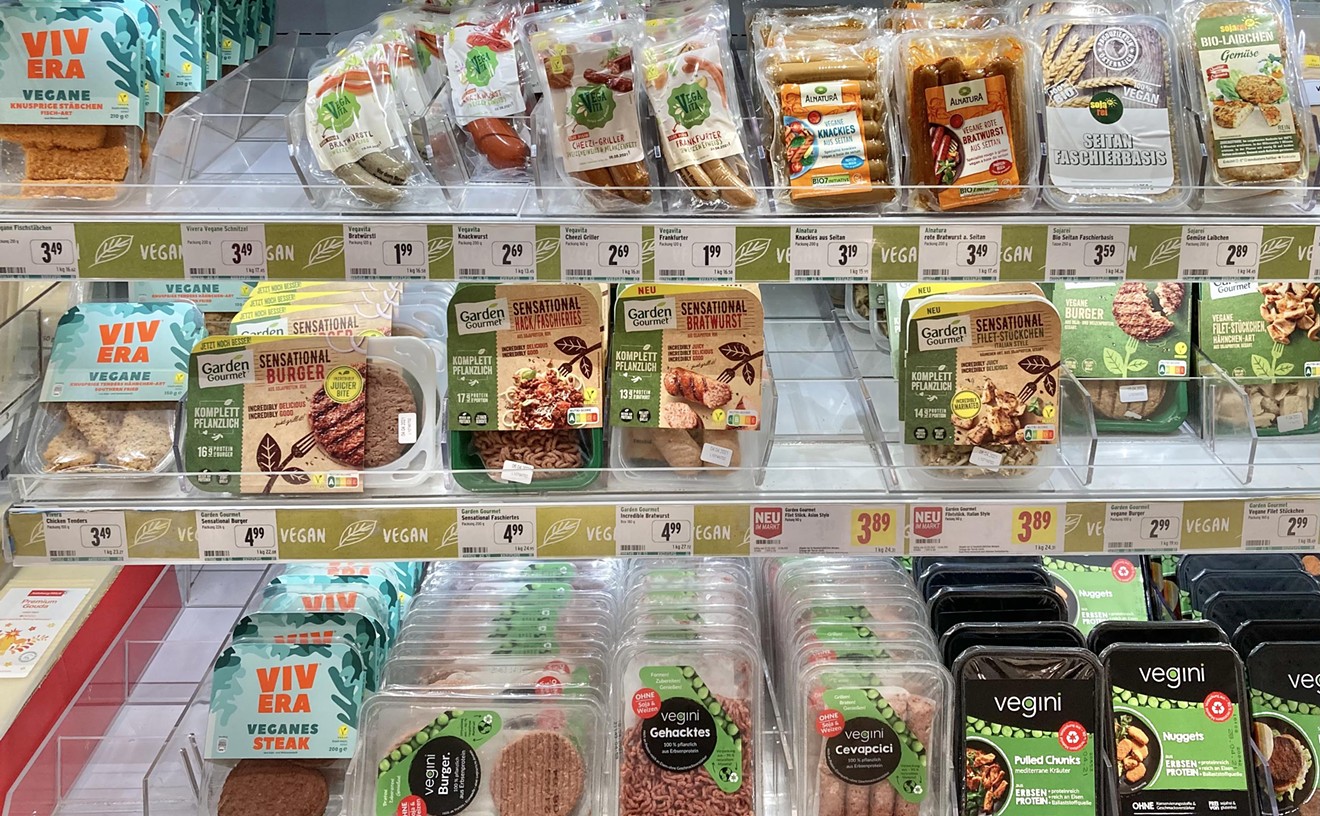Malaysian cooking, as opposed to other Southeast Asian cuisines, doesn't get much play on the American restaurant scene. This is confounding when you consider that the Malaysian kitchen offers one of the most accessible and multicultural cuisines in the world. On any given plate, you're likely to encounter Chinese cooking techniques, Indian spices, and Thai influences blended seamlessly into a polyglot cuisine that is aromatic, spicy, and unpretentiously delicious.
For diners unfamiliar with the pleasures of Malaysian food, a new Tempe cafe is bringing the flavors of the Malay peninsula to the Valley. BP Street Café, a casual eatery tucked behind a Burger King and Italian ice shop in the Broadway Square strip mall, doesn't offer much in the way of ambiance. The sunny dining room is pleasant but bland, its beige walls jazzed up with colorful Malaysian travel posters. In the corner, a flatscreen TV plays a short video titled What Is Malaysian Food? on continuous loop. The introductory video is one of several friendly gestures extended by the Pua family, who own and run the restaurant. The multigenerational crew (Grandmother can often be seen in the kitchen working the fryer) are genial ambassadors of the cuisine, stopping often to chat with guests or offer recommendations to first-time diners.
The cafe's friendly, accessible air extends into the uncluttered menu, which consists mostly of noodles and rice dishes, with most entrées priced well below $10. You'll want to start with one of the restaurant's specialty drinks. Bandung, a cotton-candy-pink drink made with milk and rosewater, is frothy, sweet, and surprisingly refreshing. It pairs well with spicier dishes, offering a nice palate cool-down in between bites. Another good option is the barley drink, a milky-sweet concoction that is said to soothe everything from a parched throat to problem skin. There's also tea tarik, otherwise known as pulled tea (the name is derived from the way it's poured back and forth — or pulled — between vessels to give it a frothy top). The coffee drink, available both hot or cold, is mellower than Thai tea, with warm, spicy notes
If you have room for only one starter, make it the roti canai, a thin, Indian-style pancake that's a popular breakfast snack in many parts of Southeast Asia. It's an irresistible dish, suffused with the same kind of airy, buttery flakiness that makes fresh croissants so meltingly good. There's an elasticity to the bread that makes it a pleasure to chew and to use as a tool for scooping up the bits of spicy potato floating in your dipping sauce. The wrapped chicken, which consists of four blisteringly hot, triangle-shaped parcels of juicy, marinated chicken, is another excellent appetizer. The meat, which has been steeped in a savory soy sauce marinade, is wrapped in tinfoil and then deep-fried. The process allows the chicken to steam in its own juices, so that when the meaty parcels are unwrapped, every bite is fall-apart tender and juicy.
Perhaps the most quintessential Malaysian curry dish is laska. Here, the coconut-infused broth is thick with rice noodles, hunks of chicken breast, and fried cubes of tofu. On a recent visit, the broth was clean and fragrant with lemongrass, though a little underwhelming. But add a spoonful of sambal sauce, Malaysia's go-to chile sauce condiment, and the soup blooms with deep flavor. The kitchen will adjust spice levels to your preference, but when it comes to laksa, turn up the heat as far as your palate (and belly) can bear.
Kway teow mee, a variation on Malaysia's wildly popular char kway teo noodle stir-fry, is a simple but near-perfect dish. It features two types of stir-fried flat noodles — rice and egg — a subtle twist that adds nice texture to the heap of slippery, savory noodles. On a recent lunchtime visit, the noodles sizzled with wok hei, the smoky-and-seared flavor delivered through careful high-flame wok cooking. Even more enticing was the noodle sauce, a distinctive soy sauce and shrimp paste blend flecked with fiery-hot chile. If you request the dish above medium-heat level, it might be a good idea to keep a tall, cool glass of bandung on hand.
The chicken chop noodle soup may not be the most exciting menu option, but it's a good choice for spice-averse palates. The savory, herb-scented broth, served with rice noodles and finger-length slices of fried chicken, is as comforting as a bowl of soup can get. There's also the excellent nasi lemak, a delicate, coconut-infused rice dish that's widely regarded as the national dish of Malaysia. During lunch recently, the rice was mounded in the plate and surrounded by neat slices of juicy, breaded chicken and garnishes, which included slices of hard-boiled egg, cucumber rounds, and a tangle of chile anchovies. The dish, in parts warmly fragrant and smoothly subtle, was altogether delicious.
The kitchen, I've been told, will be adding new items to the cafe's menu over time. For now, it's worth asking for off-menu eats like rendang, a labor-intensive meat dish with a rich, gravy-like curry. Beef is usually the protein of choice for this dish, but the kitchen used breaded chicken on a recent visit. The meaty nuggets were smothered in a sweet and sour curry paste that was so intriguingly good, let's hope it earns a spot on the permanent menu. Grilled stingray and a mussels dish are other off-menu options available on occasion, depending on market availability.
For dessert, there's no better way to drown out any lingering heat than with a bowl of ice kacang, which means ice and beans. The volcano-shaped mound of shaved ice is doused with sweet syrup, and the idea is to eat your way to the sticky layer of sweet-and-savory red beans and creamed corn at the bottom of the bowl. The whimsical concoction is big enough to share, and more refreshing than you might expect.
Last year, the National Restaurant Association (the other NRA) voted Malaysian one of its top trending cuisines. More than a year later, it still hasn't quite reached a tipping point; even major food cities like New York or L.A. lack a profusion of standout Malaysian restaurants. Thanks to the arrival of BP Street Café, sambal-starved Valley eaters can say that we now have at least one.
BP Street Café
1845 East Broadway Road
480-268-7331
www.bpstreetcafe.com
Hours: 11 a.m. to 9 p.m. Monday through Saturday
Badung drink $2.50
Roti canai $2.50
Laksa $7.50
Kway teow mee $7.50










